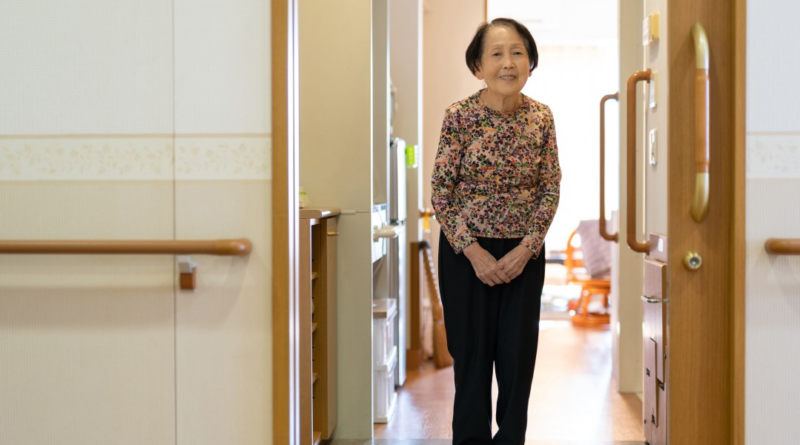What long-term care looks like around the world
Around the world, wealthy countries are struggling to afford long-term care for rapidly aging populations. Most spend more than the United States through government funding or insurance that individuals are legally required to obtain. Some protect individuals from exhausting all their income or wealth paying for long-term care. But as in the United States, middle-class and affluent individuals in many countries can bear a substantial portion of the costs. Here’s how five other countries pay for long-term care.
Japan
Long-term care insurance is mandatory for Japanese citizens age 40 and over, while in the United States only a small portion of people voluntarily obtain coverage. Half the funding for Japan’s program comes from tax revenues and half from premiums. Older adults contribute 10% to 30% of the cost of services, depending on their income, and insurance picks up the rest. There is a maximum amount people must spend from their income before the insurance covers the remainder of the cost. Workers can also take up to 93 days of paid leave to help relatives with long-term care needs. Japan assigns a care manager to each person using services; each manager oversees about 40 older adults. In 2020, Japan spent 2% of its gross domestic product on long-term care, 67% more than the United States spent that year.
The Netherlands
The Dutch have included long-term care in their universal health care system since 1968. One public insurance program pays for nursing homes and other institutional settings, and another pays for nursing and personal care at home. Enrollment is mandatory. Dutch taxpayers contribute nearly 10% of their income toward insurance premiums, up to a set amount. Out-of-pocket payments amount to about 7% of the cost of institutional care. General taxes pay for a third program in which municipalities provide financial assistance and social support for older people living at home. There is no private long-term care insurance. The Netherlands spent 4.1% of its gross domestic product on long-term care in 2021, more than any other country tracked by the Organization for Economic Cooperation and Development, and four times the amount the United States spent.
Canada
Provinces and territories fund long-term care services through general tax revenue. Money budgeted is not always enough to cover all services, and some localities give priority to those with the greatest needs. The amount of subsidies people can receive, the costs they have to pay out-of-pocket, and the availability of services vary by province and territory, as they do in the United States with state Medicaid programs. The mix of providers also varies regionally: For instance, nursing home care in Quebec is mostly run by a public system while homes in Ontario are mostly for-profit. Notably, Canada’s long-term care system is separate from its national health care system, which pays for hospitals and doctors with no out-of-pocket costs to patients. In 2021, Canada spent 1.8% of its GDP on long-term care, 80% more than the United States spent.
United Kingdom
Local authorities pay for most long-term care through taxes and central government grants. Private providers usually supply services. Government contributions are based on financial need, with copayments usually required. As in the United States, middle-class and wealthy people pay most or all of the costs themselves. Unlike in the United States, the government provides payments directly to lower-income people so they can hire workers to care for them in their homes. The U.K. has also taken steps to shield people from losing all their wealth to pay for long-term care. It subsidizes care for people with savings and property of less than about $30,000, while in the United States most people don’t qualify for Medicaid until they have run through all but $2,000 to $3,000 of their assets. In 2022, the British government proposed extending subsidies to people who have as much as $105,000 of wealth and property, with a lifetime cap of about $100,000 on how much anyone spends on long-term medical care, excluding room and board in a nursing home. But the plan has been postponed until 2025. In 2021, the United Kingdom spent 1.8% of its GDP on long-term care, 80% more than the United States did.
Singapore
Singapore recently instituted a system of mandatory long-term care insurance for those born in 1980 or later. Citizens and permanent residents are automatically enrolled in an insurance plan called CareShield Life starting at age 30. They must pay premiums until they retire or turn 67 (whichever comes later) or are approved to use services. The government subsidizes 20% to 30% of premiums for those who earn around $2,000 a month or less. Monthly payouts start at about $440. Government subsidies for nursing homes and other institutional care can range from 10% to 75%, depending on ability to pay. Those who make more than $2,000 a month receive no subsidies. CareShield is optional for Singaporeans born in 1979 or earlier; they are covered under an older, voluntary plan. Singapore also provides a means-tested monthly cash grant — this year about $290 — to help with caregiving expenses.




